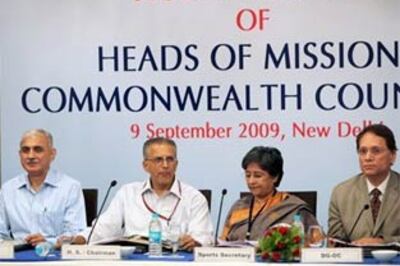
views
This is how a senior intelligence official put it late on Sunday evening: "4 killed, several bodies are scattered around, the Superintendent of Police survived miraculously. There is panic in the area." There is utter panic, just to re-emphasize. The naxalites had laid a landmine in Belpahari, about 100 km from Kolkata, on the route the convoy of West Midnapore District Superintendent of Police Ajay Nanda was taking, after a combing operation against the naxalites. The blast blew up a police jeep in the remote Bengal. "May Day" ringed loud in Writers' Building, the seat of state power, prior to the assembly elections in May.
This comes 2 months after a CPI(M) leader and his wife were burnt to death in Purulia district. The Red crescent threatens to engulf the Communist arc before the elections, as the Maoists have stepped up their ante in Communist Bengal.
In February they looted a bank in Bankura district.
On February 8, a fierce gun battle between police and Maoists in the
Belpahari forest area had ended with the death of at least two Maosits and arrest of two women cadres.
In a late night attack on January 23, Maoists blew up a forest bungalow in Purulia district.
The upsurge has been progressing slow but steady since 2004, which is more dangerous, because there is definitely a plan and a pattern emerging. The Naxalites have a long-term agenda. On December 4, 2004, approximately 150 armed Maoists blew up two excavators and a forest guesthouse at Kakrajhore village in West Bengal, bordering Ghatsila in East Singhbhum district of Jharkhand. Earlier, on October 16, 2004, six personnel of the Eastern Frontier Rifles (EFR) were killed in a landmine attack in the Ormara forest in West Midnapore district. In another major incident on February 25, 2004 eight security force personnel, including five from the EFR, were killed and four injured, when a powerful landmine exploded at Golabari in Midnapore district.
The state government is planning to deploy helicopters for aerial vigil on Maoists in the districts where the ultras are carrying out successive operations in the run-up to the coming assembly elections. Though they continue to be in mode of self-denial, Mr Bhattacharya is believed to have made it very clear to the party top brass that the left-wing extremists pose more threat to his Left Front government in the immediate and the Left coalition in the long-term, as they take control of rural Bengal's disillusioned peasantry which is considered the backbone of the Left's vote bank.
As much as the CPI(M) top brass tries to play down the Maoists threat on their citadel, these attacks reminds one that once there was Naxalbari. In West Bengal. In 1967.
Reality CheckThe 'Naxalites' take their name from the tiny hamlet of Naxalbari in the Darjeeling district of West Bengal where an insurrection commenced in March 1967, to spread across the state and ravage it for the better part of six years, till it was crushed in 1973, and eventually wiped out under the Emergency of 1975. Since then, West Bengal had remained largely free of the scourge of violence inspired by the radical Marxist-Leninist or Maoist ideology, even as large areas in its neighbouring states fell under the renewed spell of this ferocious dogma.
Naxalites are making inroads into every district in West Bengal, including Kolkata, and, according to one high-level member, are planning full-scale attacks in five-year time.
Former cops who fought the naxalite upsurge in West Bengal in the 1970s with brute force and ruthlessness say that if the Maoists were to ever launch coordinated, simultaneous attacks along the east-west corridor, they would be able to near totally cut off peninsular India from the rest of the country. And the north-south corridor can virtually drive a wedge through the vital areas of the country, cutting off the rich north-eastern part of India from the rest of the country. This very large zone will have control over huge deposits of minerals, oils and industrialised territory
"A powerful bargaining chip" is what the naxalites are looking at and in my state, they are getting it on a platter in rural Bengal. Time to think about land reforms, part II, comrades, or West Bengal might just be heading the Chattisgarh way.first published:February 28, 2006, 14:40 ISTlast updated:February 28, 2006, 14:40 IST
window._taboola = window._taboola || [];_taboola.push({mode: 'thumbnails-mid-article',container: 'taboola-mid-article-thumbnails',placement: 'Mid Article Thumbnails',target_type: 'mix'});
let eventFire = false;
window.addEventListener('scroll', () => {
if (window.taboolaInt && !eventFire) {
setTimeout(() => {
ga('send', 'event', 'Mid Article Thumbnails', 'PV');
ga('set', 'dimension22', "Taboola Yes");
}, 4000);
eventFire = true;
}
});
window._taboola = window._taboola || [];_taboola.push({mode: 'thumbnails-a', container: 'taboola-below-article-thumbnails', placement: 'Below Article Thumbnails', target_type: 'mix' });Latest News
The name Belpahari evokes romance, reminds of a certain tribal euphoria trapped in a string of hillocks that hardly stretches beyond the college street culture of West Bengal. Did they try to kill romance? Or stifle the little erotica left in Bengali minds? Or perhaps put a little red blot on our Communist emotions? Buddhadeb Bhattacharya (Jyoti Basu's successor) could have cared less, but what happened on Sunday evening, as dusk approached on an otherwise sleepy hamlet in Belpahari in west Midnapore district, was a stark reminder that his red fortress is under attack. Lest you forget.
This is how a senior intelligence official put it late on Sunday evening: "4 killed, several bodies are scattered around, the Superintendent of Police survived miraculously. There is panic in the area." There is utter panic, just to re-emphasize. The naxalites had laid a landmine in Belpahari, about 100 km from Kolkata, on the route the convoy of West Midnapore District Superintendent of Police Ajay Nanda was taking, after a combing operation against the naxalites. The blast blew up a police jeep in the remote Bengal. "May Day" ringed loud in Writers' Building, the seat of state power, prior to the assembly elections in May.
This comes 2 months after a CPI(M) leader and his wife were burnt to death in Purulia district. The Red crescent threatens to engulf the Communist arc before the elections, as the Maoists have stepped up their ante in Communist Bengal.
In February they looted a bank in Bankura district.
On February 8, a fierce gun battle between police and Maoists in the
Belpahari forest area had ended with the death of at least two Maosits and arrest of two women cadres.
In a late night attack on January 23, Maoists blew up a forest bungalow in Purulia district.
The upsurge has been progressing slow but steady since 2004, which is more dangerous, because there is definitely a plan and a pattern emerging. The Naxalites have a long-term agenda. On December 4, 2004, approximately 150 armed Maoists blew up two excavators and a forest guesthouse at Kakrajhore village in West Bengal, bordering Ghatsila in East Singhbhum district of Jharkhand. Earlier, on October 16, 2004, six personnel of the Eastern Frontier Rifles (EFR) were killed in a landmine attack in the Ormara forest in West Midnapore district. In another major incident on February 25, 2004 eight security force personnel, including five from the EFR, were killed and four injured, when a powerful landmine exploded at Golabari in Midnapore district.
The state government is planning to deploy helicopters for aerial vigil on Maoists in the districts where the ultras are carrying out successive operations in the run-up to the coming assembly elections. Though they continue to be in mode of self-denial, Mr Bhattacharya is believed to have made it very clear to the party top brass that the left-wing extremists pose more threat to his Left Front government in the immediate and the Left coalition in the long-term, as they take control of rural Bengal's disillusioned peasantry which is considered the backbone of the Left's vote bank.
As much as the CPI(M) top brass tries to play down the Maoists threat on their citadel, these attacks reminds one that once there was Naxalbari. In West Bengal. In 1967.
Reality CheckThe 'Naxalites' take their name from the tiny hamlet of Naxalbari in the Darjeeling district of West Bengal where an insurrection commenced in March 1967, to spread across the state and ravage it for the better part of six years, till it was crushed in 1973, and eventually wiped out under the Emergency of 1975. Since then, West Bengal had remained largely free of the scourge of violence inspired by the radical Marxist-Leninist or Maoist ideology, even as large areas in its neighbouring states fell under the renewed spell of this ferocious dogma.
Naxalites are making inroads into every district in West Bengal, including Kolkata, and, according to one high-level member, are planning full-scale attacks in five-year time.
Former cops who fought the naxalite upsurge in West Bengal in the 1970s with brute force and ruthlessness say that if the Maoists were to ever launch coordinated, simultaneous attacks along the east-west corridor, they would be able to near totally cut off peninsular India from the rest of the country. And the north-south corridor can virtually drive a wedge through the vital areas of the country, cutting off the rich north-eastern part of India from the rest of the country. This very large zone will have control over huge deposits of minerals, oils and industrialised territory
"A powerful bargaining chip" is what the naxalites are looking at and in my state, they are getting it on a platter in rural Bengal. Time to think about land reforms, part II, comrades, or West Bengal might just be heading the Chattisgarh way.




















Comments
0 comment